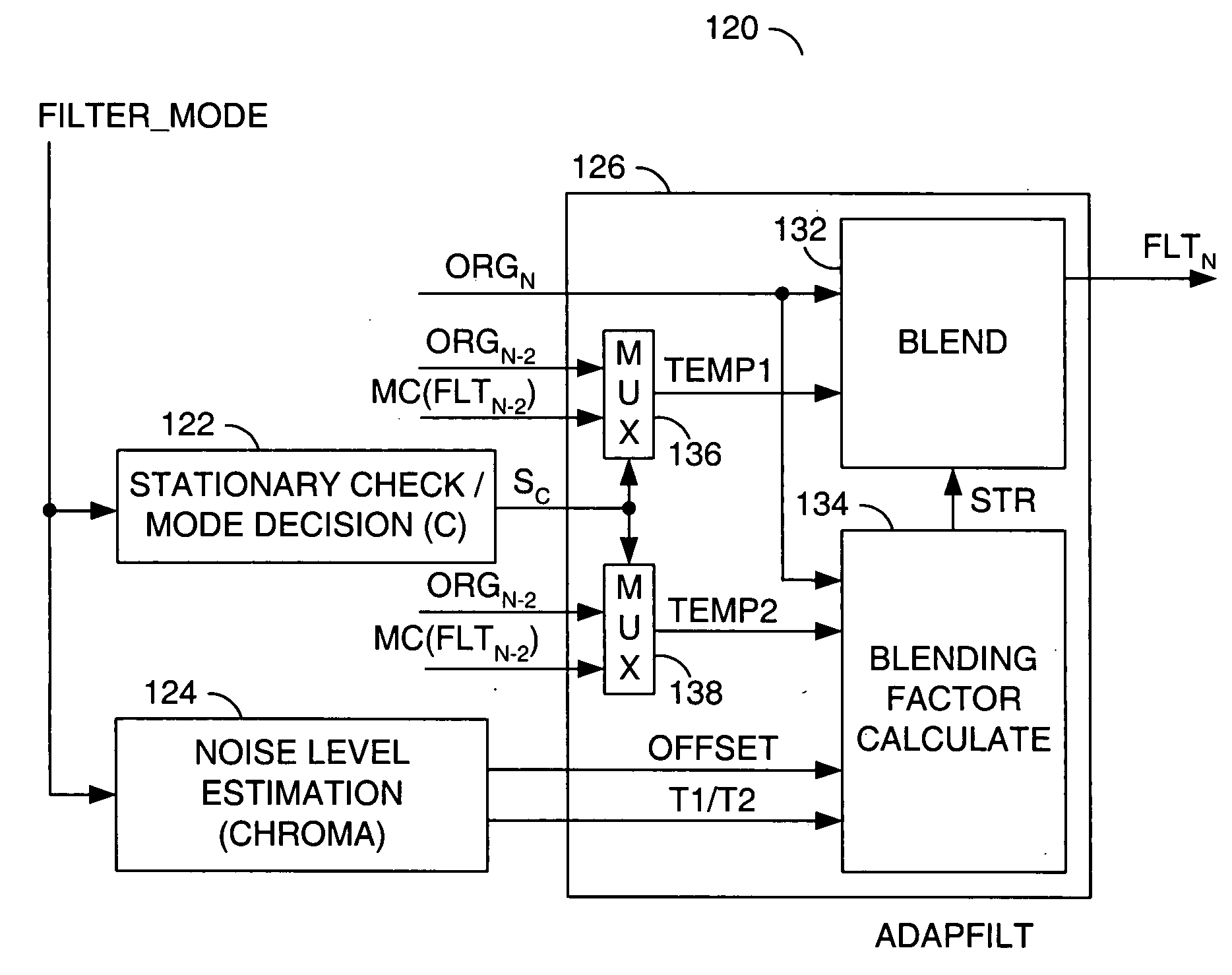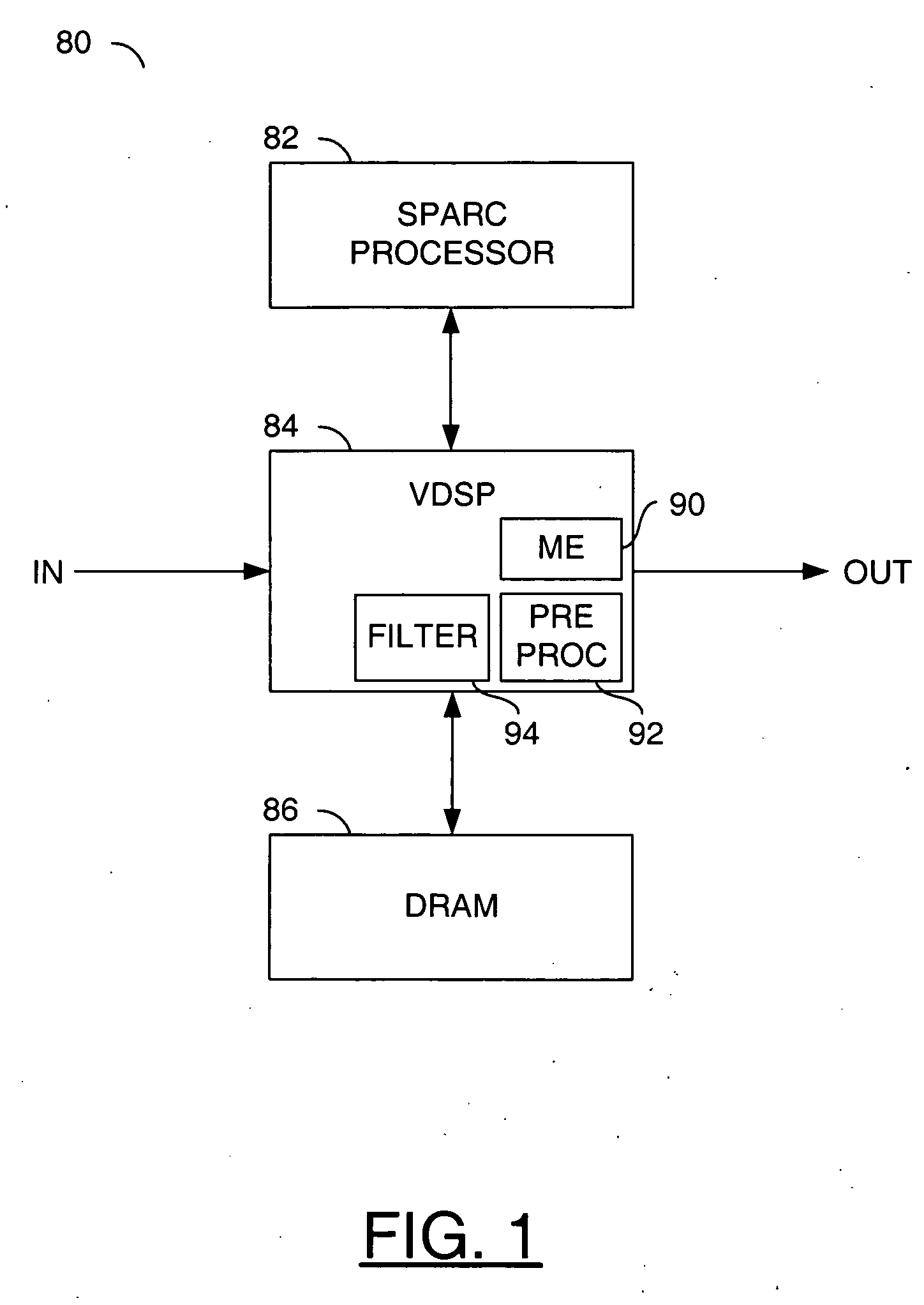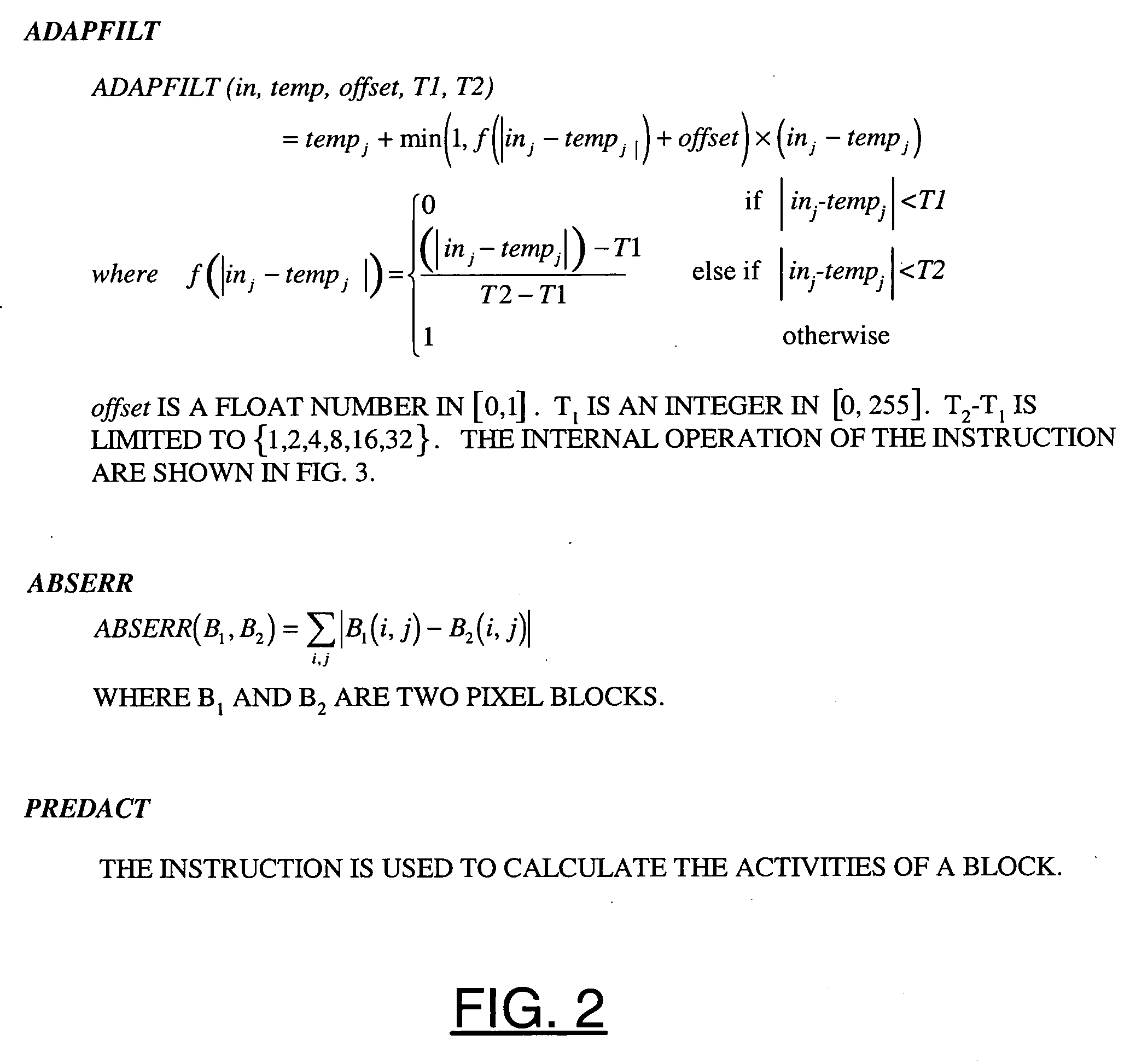Noise adaptive 3D composite noise reduction
a composite noise and noise reduction technology, applied in the field of digital video filtering, can solve the problems of large volume, low noise estimation, high computational and memory bandwidth, and inability to meet the needs of many low-end applications, and achieve accurate noise estimation, high texture, and accurate noise estimation
- Summary
- Abstract
- Description
- Claims
- Application Information
AI Technical Summary
Benefits of technology
Problems solved by technology
Method used
Image
Examples
Embodiment Construction
[0013] The present invention concerns a technique for reduction of both cross-luminance (cross-luma) and cross-chrominance (cross-chroma) types of composite artifacts. The technique may be applicable for both National Television System Committee (NTSC) systems and Phase Alternate Line (PAL) systems. The technique generally comprises motion compensated noise filtering to reduce both random noise and composite noise.
[0014] In the following description, the NSTC system is assumed, unless explicitly stated otherwise. Consider a sequence of digital video fields (e.g., ORG0, ORG1, ORG2, . . . ) with each field containing composite noise. For cross-chroma reduction, the following observations generally apply:
[0015] (1) Cross-chroma artifacts that appear in stationary objects in the sequence may oscillate from an original field ORGN to a previous same-parity field ORGN−2 (or ORGN−4 for PAL) between two values. A mean of the two values may be an artifact-free chrominance value.
[0016] (2) ...
PUM
 Login to view more
Login to view more Abstract
Description
Claims
Application Information
 Login to view more
Login to view more - R&D Engineer
- R&D Manager
- IP Professional
- Industry Leading Data Capabilities
- Powerful AI technology
- Patent DNA Extraction
Browse by: Latest US Patents, China's latest patents, Technical Efficacy Thesaurus, Application Domain, Technology Topic.
© 2024 PatSnap. All rights reserved.Legal|Privacy policy|Modern Slavery Act Transparency Statement|Sitemap



